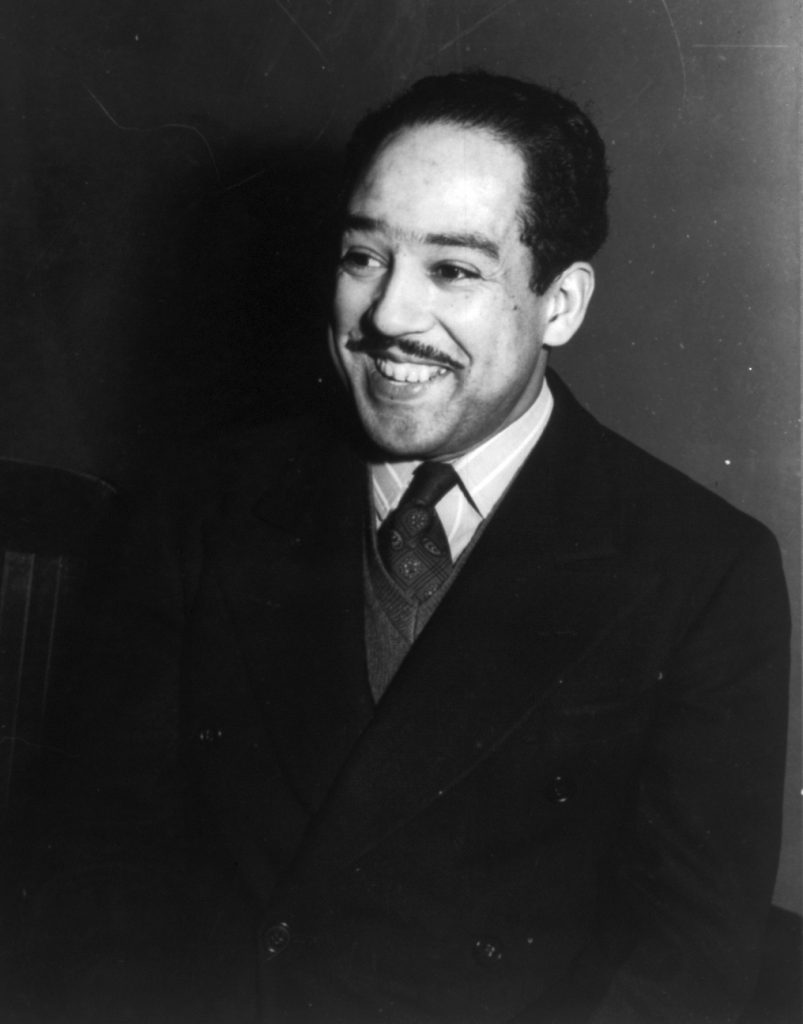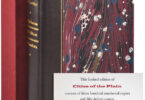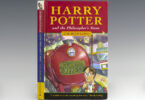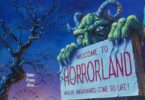Children’s Books by Langston Hughes
Born February 1, 1902, in Joplin, Missouri, Langston Hughes was an early innovator of “Jazz Poetry” and one of the founders of the Harlem Renaissance. His most popular and well-known poem, “The Negro Speaks of Rivers” was collected in his first book of poetry, The Weary Blues (1926), published by Alfred A. Knopf. His first short story collection, The Ways of White Folks, was published in 1934, also by Alfred A. Knopf.

In 1932, Macmillan published a children’s book written by Hughes and Arna Bontemps, another prominent figure in the Harlem Renaissance. Popo and Fifina, a storybook about young children in Haiti, was in print for 20 years before rumors of Hughes’ ties to the Communist Party began to hurt his reputation, career, and book sales. Oxford University Press re-published the book in 1993.
Although Hughes enjoyed popularity as a poet and writer throughout the 1920s and 1930s, he was suspected of being a communist and brought before Senator Joseph McCarthy’s subcommittee in the early 1950s. Publishers were reticent to publish his books and organizations wouldn’t hire him to speak on the grounds that he was anti-Christian and a Communist. Hughes denied these claims.
At this time the publisher Franklin Watts reached out to Hughes to author some books for their ‘First Books’ Series, whose motto was “When boys and girls FIRST start asking why?…what?…and how? FIRST BOOKS are the first books to read on any subject.”
Franklin Watts
Formed in 1942, Franklin Watts published high-quality educational books for young people. Helen Hoke Watts, Vice President and Director of international projects, was reportedly very liberal and sought out authors and illustrators who were disenfranchised during the McCarthy era. Some popular Franklin Watts authors like Mary Elting and Franklin Folsom were pushing the publisher to include books for and by African-Americans and recommended Hughes be invited to add to the First Books Series.
The company asked for an official statement from Hughes denying his membership to the Communist Party which they issued with the promotional materials for the books. In the statement, Hughes reiterated that his “goal as a writer was to effect social change in a free, harmonious America. If my little book, The First Book of Negroes, can help to that end, I’ll be grateful.”
Helen Hoke Watts supported Hughes’ work and asked him to be honest about racial relations in the books that he wrote for the series. The First Book of Negroes discusses segregation and discrimination in the United States in the pre-Civil Rights era, and The First Book of the West
The First Book of Negroes ends on a hopeful and inspiring note which resonates even today. The main character’s father says while driving home in their automobile after ice skating at Rockefeller Plaza:
“It is good to live in America, Terry. Our country has many problems still to solve, but America is young, big, strong, and beautiful. And we are trying very hard to be, as the flag says, ‘one nation, indivisible, with liberty and justice for all.’ Here people are free to vote and work out their problems… By taking an interest in our government, and by treating our neighbors as we would like to be treated, each one of us can help make our country the most wonderful country in the world.”
Thanks for the reminder, Mr. Hughes.
Langston Hughes died at the age of 65 on May 22, 1967, from complications following surgery related to prostate cancer, less than a decade after the last of his First Books was published.
Franklin Watts First Books by Langston Hughes:
The First Book of Negroes
The First Book of Negroes is a series of vignettes about historical and contemporary African-Americans strung together by a story featuring a young African-American boy named Terry who lives in Harlem. The book doesn’t shy away from issues of segregation and discrimination that were still prevalent in the United States, especially in the Jim Crow South where discrimination and segregation were still legal at the time the book was published.
The first edition of The First Book of Negroes was published in 1952. The illustrations were by Ursula Koering, who during her lifetime illustrated more than 200 children’s books, including The First Book of Indians (1950) and The First Book of Eskimos (1952) in the Franklin Watts series. Koering later became a sculptor for the Franklin Mint.
The First Book of Rhythms
The First Book of Rhythms traces the beginnings of rhythm and explains the natural cycles and rhythms in nature, music, words, athletics, shapes, machines – how to draw, hear, speak, feel and play rhythms. It presents a manifestation of the rhythms that control our
The first edition of The First Book of Rhythms was published in 1954. Textual drawings for the book were done by Robin King. Robin King was a children’s book author and illustrator who became a radio personality and the voice of Mighty Dog and Clorox bleach commercials in the 1970s. He was noticed for his voice during an interview about a controversial children’s book he wrote for Norton in 1962 called The Angry Book: my ABC of Mean Things.
3. The First Book of Jazz
The First Book of Jazz is the third of five books that Langston Hughes wrote for the Franklin Watts First Books series. In it, Hughes uses the story of Louis Armstrong to illustrate the roots of Jazz and follow the growth of the style through New Orleans, Chicago, and New York.
The first edition of The First Book of Jazz was published in 1955. The ‘stylized bebop drawings’ were by Cliff Roberts, and the music selection was by David Martin. Cliff Roberts (1929-1999) was a cartoonist and animator. His cartoons appeared in magazines such as The New Yorker and Playboy. He also worked as an animator on Sesame Street and wrote and drew the short-lived Sesame Street newspaper comic strip.
4. The First Book of the West Indies
The first edition of The First Book of the West Indies was published in
“A look at the Caribbean Islands that includes a substantial amount of information on customs, trade, geographical characteristics, history etc., but lacks the swinging and imaginative quality of Langston’s other First Books on Jazz and Rhythms. Two general introductory sections deal with the area’s colorful background, the Indians which were there originally, prediscovery and the periods of piracy which followed. Moving then to the islands and groups of islands, there are notes on Cuba, Puerto Rico, Haiti, the Dominican Republic, the Virgin Islands, and the Antilles. Though extensive enough, these read more like a geography text than the personalized narrative which has often been successful in First Books about other countries.”
5. The First Book of Africa
The first edition of The First Book of Africa was published by Franklin Watts in 1960.
The fifth and final book by Hughes for the Franklin Watts series, the book is illustrated with photographs. At the time of publication, Kirkus Reviews noted: “Written by the celebrated Negro poet, Langston Hughes, this is a comprehensive study, clarifying one of the most complex areas in the world today. The geography of Africa is described, the various racial and cultural strains of which it is comprised are stated, a picture of colonial life and its accompanying problems are dispassionately reviewed.”
References:
Langston Hughes: A Biography by Laurie Leach
The Life of Langston Hughes: Volume II: 1941-1967 by Arnold Rampersad
Learning from the Left: Children’s Literature, the Cold War, and Radical Politics in the United States by Julia L. Mickenberg
Tales for Little Rebels: A Collection of Radical Children’s Literature by Julia L. Mickenberg and Philip Nel
Author Ariel S. Winter highlights a few of these Langston Hughes book on his blog about Children’s books of the 20th century by ‘Adult Authors’ – We Too Were Children
Amy C. Manikowski is a writer living in Asheville, NC.










